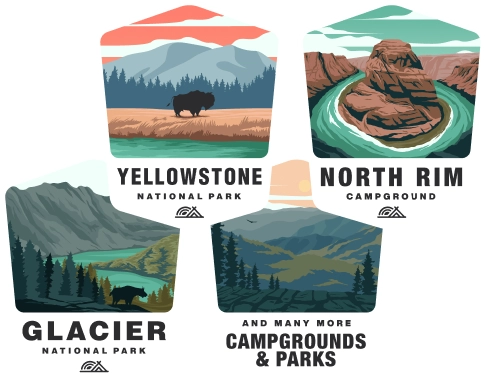Camping at Afognak Island State Park
Overview of Afognak Island State Park
Afognak Island State Park in Alaska is a unique and secluded wilderness area that offers a variety of outdoor adventures for visitors. The park is known for its diverse wildlife, including brown bears, Sitka deer, and many species of birds, as well as its rich marine life, such as sea lions, seals, and whales. It offers a primitive wilderness experience, and due to its remote location, it can be challenging to reach.
How to Get There
Accessing the park: To access Afognak Island State Park, you must take a seaplane or boat from the city of Kodiak, which is located on the nearby Kodiak Island. There are no roads or ferry services to the park, so you'll need to arrange transportation with one of the charter services in Kodiak.
Activities
Wildlife Viewing and Photography: One of the main attractions of Afognak Island is the abundant wildlife. Bears, elk, and many bird species inhabit the area, making it a prime spot for wildlife viewing and photography.
Fishing: The waters around Afognak Island are rich in salmon, halibut, and trout, offering fantastic opportunities for both freshwater and saltwater fishing.
Hiking and Kayaking: Visitors can hike through old-growth forests and along the coastline. Kayaking is also popular and allows for exploration of the coastline and viewing marine life up close.
Camping
Campsites: Campers can choose from a limited number of rustic campsites. It's essential to plan and bring all necessary gear since the facilities are very basic.
Bear Safety: Given the dense bear population, you must practice bear safety. This includes storing food in bear-proof containers and understanding how to behave if you encounter a bear.
Leave No Trace: Visitors must follow Leave No Trace principles to minimize their impact on the environment, which is especially critical in such a pristine and remote area.
Permits and Reservations
Permits: While you may not need a permit to camp, it's important to check the latest regulations with the Alaska Department of Natural Resources or the local ranger district before planning your trip.
Weather and Best Time to Visit
Climate: The climate on Afognak Island is typically maritime, with cool summers and mild winters. It can be rainy and foggy, so waterproof gear is a must.
Best Time to Visit: The best time to visit is during the summer months (June - August) when the weather is generally milder, and wildlife is most active. However, this is also when the park is busiest.
Safety and Emergency Preparedness
Remote Location: Because of its remote location, access to emergency services is limited. It is crucial to be self-sufficient, carry a first-aid kit, and have the ability to call for help in case of an emergency, such as a satellite phone or an emergency locator beacon.
Tides and Ocean Currents: If you plan to kayak or boat, be aware of the tides and ocean currents, as they can be strong and unpredictable.
Conservation Efforts
Protecting Wildlife: As a visitor to Afognak Island State Park, you are encouraged to respect wildlife habitats and maintain a safe distance from animals. Do not disturb or feed wildlife.
Sustainable Practices: Practicing sustainability by reducing waste, not leaving behind any trash, and avoiding the introduction of non-native species is crucial in preserving the park's natural state.
Volunteer Opportunities: The park occasionally offers volunteer opportunities for those looking to help with conservation efforts and maintenance projects.
Conclusion
Afognak Island State Park is a remote and beautiful destination for experienced campers and outdoor enthusiasts who respect and enjoy the wilderness. Proper planning, preparedness, and a deep appreciation for nature are key to having a safe and enjoyable trip to this remarkable Alaskan park.
